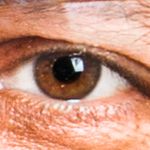- Home
- Stock Contributors
- Discussions
- If you enlarge your AI images substantially...
- If you enlarge your AI images substantially...
If you enlarge your AI images substantially...
Copy link to clipboard
Copied
If you enlarge your AI images substantially, it's a good idea to check the image boarders. I don't think this would be cause for rejecting an image, but one never knows how picky a particular moderator might be.
In the example attached, note the light border that is created after upscaling a 1456x816 (72 dpi) AI image to 30" wide @ 300 dpi, which can easily be corrected with Content Aware Fill or a very slight crop. Then, after you've corrected that, look for more major issues one last time. 🙂
Community Volunteer | I don't make the rules; I just try to explain them.
--------------------------------
Why did Little Miss Muffet step on the spider? Because it got in her whey.
Copy link to clipboard
Copied
Borders are a reason for rejection.
Copy link to clipboard
Copied
Rejection can be expected. Take 10 seconds longer and crop your image.
Photography is more than just pressing a button!
========================================
Copy link to clipboard
Copied
Exactly. And these 2 or 3 pixel borders that sometimes occur during enlargement aren't visible when viewed at 100% and why it's a good idea to make it a practice to view images at 200% minimum, especially when enlarging AI.
Community Volunteer | I don't make the rules; I just try to explain them.
--------------------------------
Why did Little Miss Muffet step on the spider? Because it got in her whey.
Copy link to clipboard
Copied
Read the DOs & DON'Ts, @daniellei4510.
DON'T Englarge Files.
DON'T Add Vignettes or Frames (borders).
https://helpx.adobe.com/stock/contributor/help/editing-dos-and-dont.html
Copy link to clipboard
Copied
AI images that are not enlarged would never meet Adobe Stock's minimum file size requirements. It is the enlargment process that adds the light border and I recommended that it be removed before submitting AI images that are upscaled.
Community Volunteer | I don't make the rules; I just try to explain them.
--------------------------------
Why did Little Miss Muffet step on the spider? Because it got in her whey.
Copy link to clipboard
Copied
That's correct, and it's written in the helpx files. But there are also arguments for upscaling.
I think that somewhere I read that Mat Hayward scales-up his generative AI pictures. The problem is that scaling needs to be done cautiously, and you should know that all the artefacts get also scaled. And we all know that artefacts get very visible when you check the assets at 200% or more.
Copy link to clipboard
Copied
Perhaps we should differentiate between enlarging and upscaling. Even though they're interchangabe in normal converstion, enlarging an image in Photoshop the old fashioned way would indeed introduce artifacts, softening, and more. So one needs to use a decent upscaler, such as Gigapixel or Photoshop's Neural Filter > Super Zoom, both of which use AI to fix the issues that would result from a normal enlargement. I use the latter for two reasons: Gigapixel AI tends to oversharpen eyes and hair (and it crashes on me a lot), and is destructive if one neglects to make a copy, while Super Zoom creates a new document all together and doesn't over sharpen. Matt, I believe, from watching one of his Adobe presentations, uses the Enhance feature in Lightroom.
Community Volunteer | I don't make the rules; I just try to explain them.
--------------------------------
Why did Little Miss Muffet step on the spider? Because it got in her whey.
Get ready! An upgraded Adobe Community experience is coming in January.
Learn more



